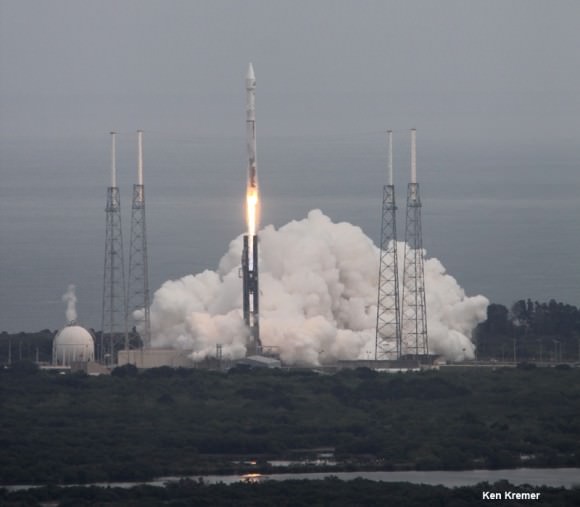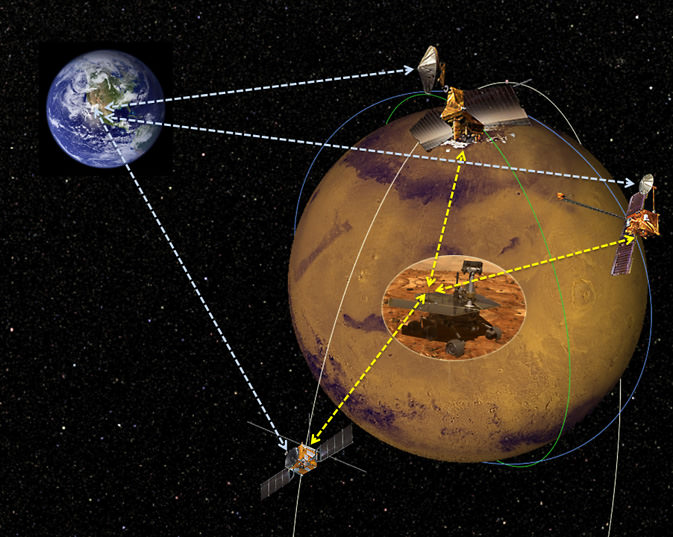Remember during the government shutdown when it looked as though a NASA Mars mission would be delayed? Launch preparations continued because delaying the Mars Atmosphere and Volatile EvolutioN (MAVEN) spacecraft — which could have pushed its window back by years — would cause “imminent risk to life or property”, administrator Charles Bolden told Universe Today in November.
Both NASA’s Mars Reconnaissance Orbiter and Mars Odyssey currently provide a vital data link to send huge streams of information from the rovers on the surface, Opportunity and Curiosity. (And the Mars 2020 rover is coming up in a few years, too.) While both orbiters are working well, they are both well over their design lifetimes. MAVEN is now on its way to Mars and should get there in September.
MAVEN’s mission, however, is only designed to last for a year. While it could last longer, NASA is already thinking ahead for satellite backups — especially for the 2020s. And that could include commercial participation, according to a new request for information the agency put out this week.
“NASA has no scheduled Mars science orbiters after MAVEN arrives on the Red Planet in the fall,” the agency warned in a press release. “This creates the need to identify cost-effective options to ensure continuity of reliable, high-performance telecommunications relay services for the future.”

The solicitation (which you can see here) proposes to have NASA purchase telecommunications services from some “commercial service provider” that would be responsible for operating and owning the satellites. This isn’t necessarily open only to industry, either. NASA says that organizations could include commercial providers, its own centers, universities, non-profits, federally funded research and development centers and even U.S. government and international organizations.
“We are looking to broaden participation in the exploration of Mars to include new models for government and commercial partnerships,” stated John Grunsfeld, associate administrator of NASA’s science mission directorate. “Depending on the outcome, the new model could be a vital component in future science missions and the path for humans to Mars.”
And it’s possible these orbiters could explore new technologies for Mars — specifically, laser/optical communications, which were used to great success on the Lunar Atmosphere and Dust Environment Explorer (LADEE) mission. And other laser missions are coming up. This could make it easier to send back movies from Mars as well as still pictures.
Source: NASA Jet Propulsion Laboratory


Maybe a large batch of cheaper / low mass cubesats could be deployed and work as an array.
The satellites would need decent transmitting power, and the ability to point a high-gain antenna at earth, so bigger than cubesats. It’s an obvious candidate for outsourcing, since communications satellites are the bread-and-butter of the commercial space sector.